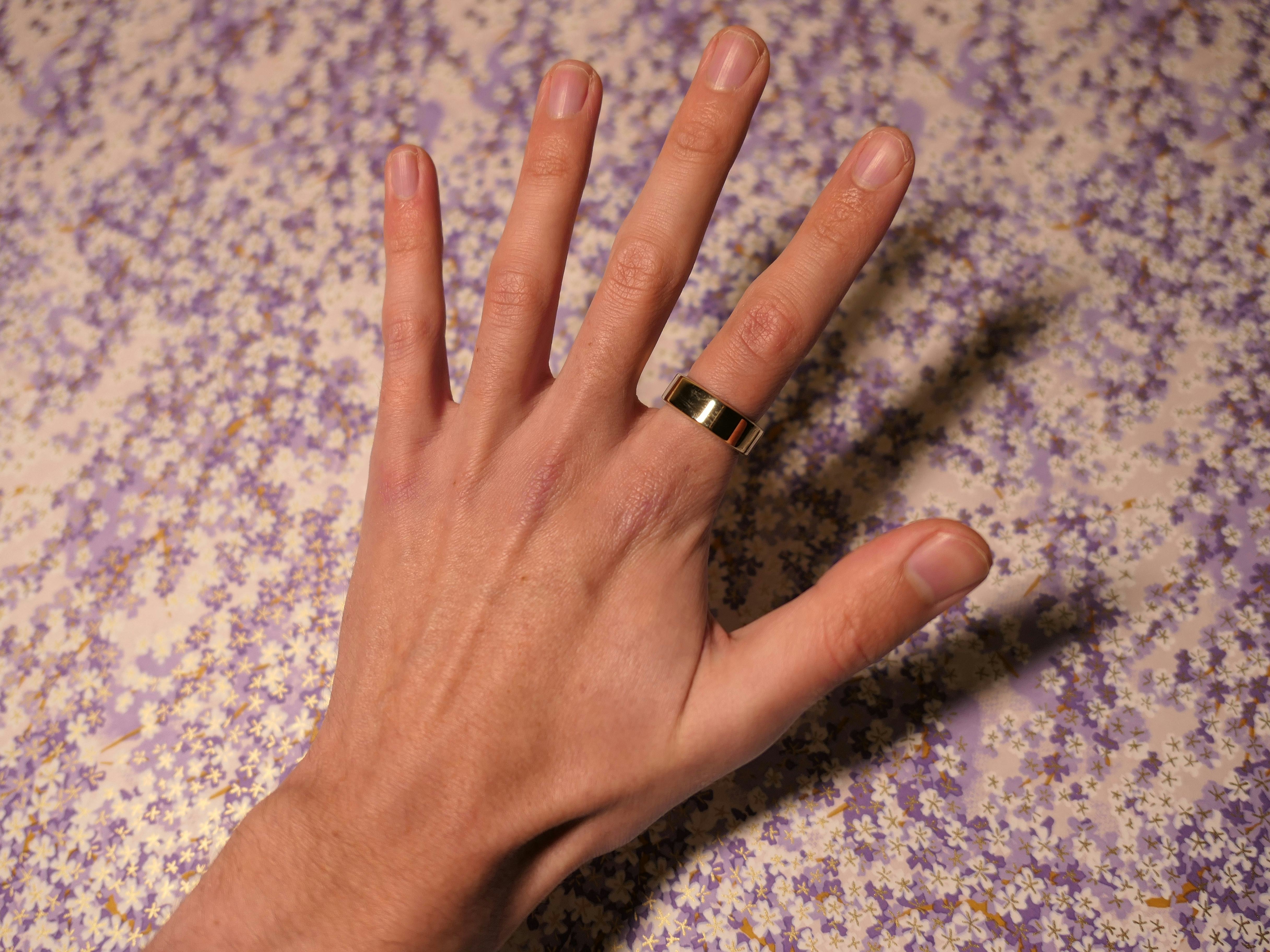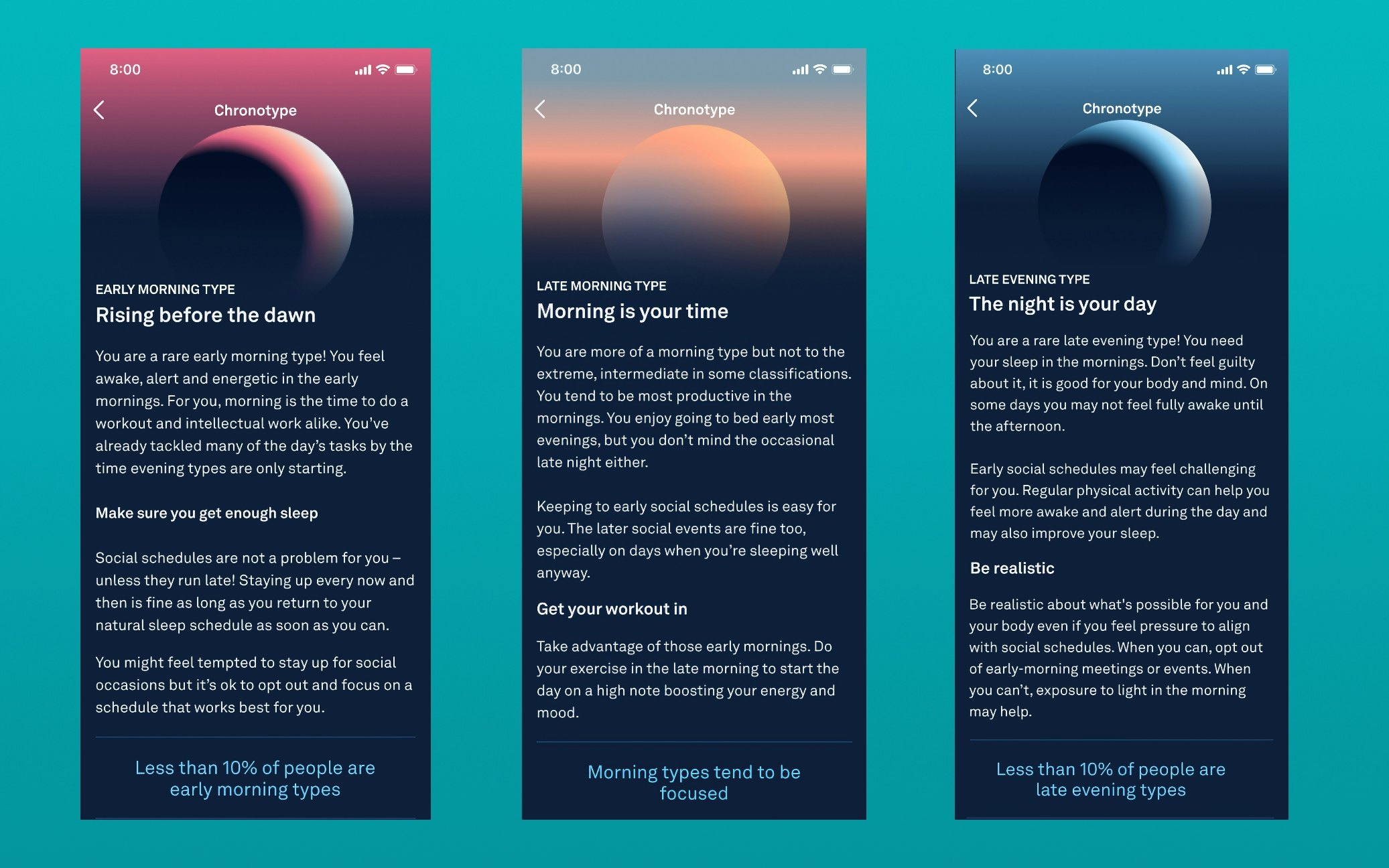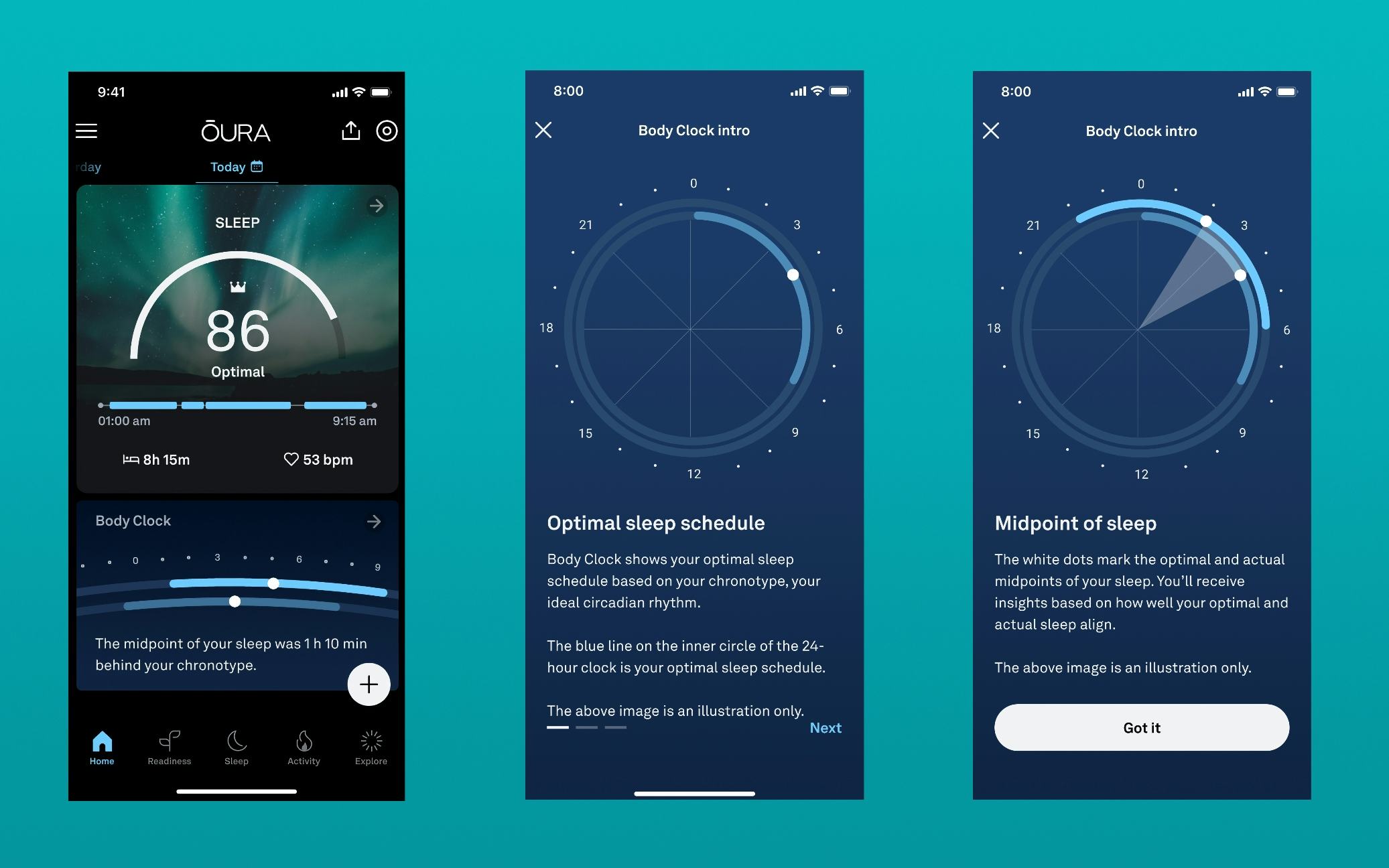
The third-generation Oura Ring was already a more than capable sleep-tracking tool, but now, as part of a series of updates Oura is rolling out over the next week, it’ll help you directly tailor your sleep habits to your natural circadian rhythm.
Oura stands out as one of the few fitness trackers focused on the recovery aspect of health just as much as exercise. Sleep is the core component that touches just about everything wearables measure, so expanding on it only boosts Oura’s headstart, but it’s how the company is doing it that’s the interesting part.
Chronotypes

Using 90 days of the health data your ring has collected, Oura can determine your chronotype, which is when you’re most inclined to sleep or, in simpler terms, a more nuanced designation of “early bird” or “night owl.” Oura has identified six chronotypes it’ll sort users into (early morning, morning, late morning, early evening, evening, and late evening) along with recommended bedtime and wake-up times.
What’s neat is once your chronotype has been calculated — Oura can use data already collected — the information is presented almost in the style of an astrological chart. The app will affirm when you might feel most energized during the day, share common facts about other people with your chronotype (evening types are often “innovative,” according to Oura), and offer an optimal timeframe for when you should sleep throughout the day, with a beginning, midpoint, and end, labeled on an easy to read chart so you can know how to sleep to best.
That more playful treatment isn’t a mistake. Oura’s science communication lead, Caroline Kryder, tells Inverse that the company wants people to “identify with their chronotype just as much as they identify with being a Libra or Gemini.” And for the right kind of person, that could very well work.
Body Clock

Having some further insight into your unique circadian rhythm will come in handy with Oura’s other major new addition, a new card in the app’s home screen called “Body Clock.” Using the ideal sleep pattern identified with your chronotype, the app now includes a graphic (essentially a section of a clock) that illustrates how your previous night's sleep differed from the ideal and what you can do to shift it.
Oura has included guidance on sleeping habits previously, but this is a more visual way of illustrating the information and one further informed by the new calculations the company is making around chronotypes. It’s just one of the ways Oura tries to tell a “story” around the data it collects. The goal is to engage but also “do the cognitive work for users,” according to Jason Russell, Oura’s senior director of product.
More Nuance
These two updates are joined by others, like a new metric for measuring sleep regularity, and consideration for how to better track polyphasic sleepers (people who sleep multiple times a day) or anyone whose work or personal life (having kids!) might make their schedule irregular. The goal is to be more nuanced with how the Oura app tracks you and how it communicates what it’s learned.
It’s a focus that makes sense. Slowly but surely, competing wearables are catching up to Oura’s features and its winning focus on rest and recovery. Besides its sleep tracking, the best part of the Oura Ring experience is how the app communicates with you. Now it has even more tools to do it.







